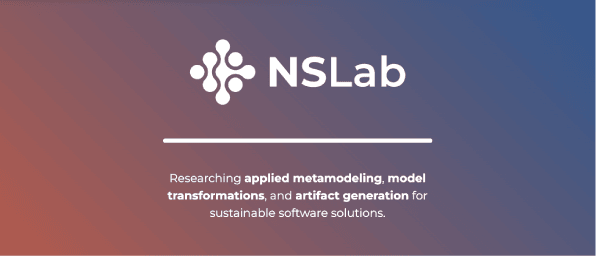
Dear community members, update on last month's progress! We made significant strides in several key areas: a deeper dive into Normalized Systems theory, a compelling new case study on its use in data warehousing, and further development of our innovative metamodels and their plugins. Let's take a look at the highlights!

Application of Normalized Systems Theory in Data Warehousing: Launching a Novel Case Study
The Normalized Systems Laboratory at the Czech Technical University in Prague has started a collaboration with the university's Computing and Information Centre (CIC). The project, part of Petr Prokop's PhD research, explores the application of Normalized Systems Theory (NST) to data warehouse (DWH) architectures — an area where NST has not yet been systematically applied. By targeting evolvability challenges in data warehousing, this study seeks to deliver the first empirical evidence of NST's relevance for designing sustainable and adaptable data warehouse architectures.
Data warehouses — exposed to constant changes in technology, user needs, regulations, and domain models — introduce challenges that NST has not yet addressed. This study will test whether applying NST design theorems can improve adaptability, maintainability, and sustainability in DWH systems.
CIC will provide examples of frequent changes typically encountered in their operational data warehouse, including new user requirements, technology platform upgrades, and modifications to operational data sources. Depending on the findings, the research may result in one larger integrated case study or several smaller, focused studies.
If you want to know more about the study (provide case study, check what the plans are in higher detail, provide own experience, collaborate now or in the future), do not hesitate to take contact with Petr Prokop - prokope3@fit.cvut.cz.

As more and more new metamodels and plugins arise we take a look at two of them which cover new types of applications.
For many years, NSX has been active in the field of IoT (Internet of Things) through projects like Cast4All and Helicus. Now, NSX is starting an effort to simplify and standardize the development of software for IoT edge devices, combining the strength and potential of both the NS and the IoT framework. .As part of this effort, a bachelor thesis is being carried out at NSX for the degree in sustainable development in industrial engineering at the University of Uppsala in Sweden. The thesis focuses on model-driven development for software for IoT edge devices, with an extra focus on possible applications within the logistics industry.
A metamodel has been defined within the MicroRadiant, modeling an application on an IoT edge device. In April, a plug-in for the MicroRadiant was successfully made, creating a proof-of-concept for the expansion of software on IoT edge devices. Expanders have been developed in both Micropython and Java ME to reach multiple platforms, including several protocols, networks and allowing the use of a wide variety of sensors and actuators. Thus laying the groundwork for scalable and maintainable NS based edge software development.
The second metamodel focuses on HLA (High Level Architecture), a well-established standard in the simulation industry. HLA defines how distributed simulations can interoperate. To build a new simulation software stack, we're creating a metamodel (a model defining the structure of simulation models), a plugin (for the microradiant), and expanders. This is a joint project between TNO and NSX.
To enable TNO's simulation experts to use these tools while still working with their familiar domain language, an HLA metamodel was developed. Because HLA has been around for a long time, the methods for reading and writing its data format (XML) are well-defined. We've created an HLA XML reader that converts these XML files into an NS metamodel. This NS metamodel then serves as the foundation for the plugin and the expanders.
The expanders are being developed by the TNO simulation experts. This direct involvement provides valuable feedback on the metamodel's design and ensures a well-structured simulation program. Furthermore, this structure is being checked against NS principles, leading to simulation software that can adapt and grow effectively.
Kind community regards and see you next month!
